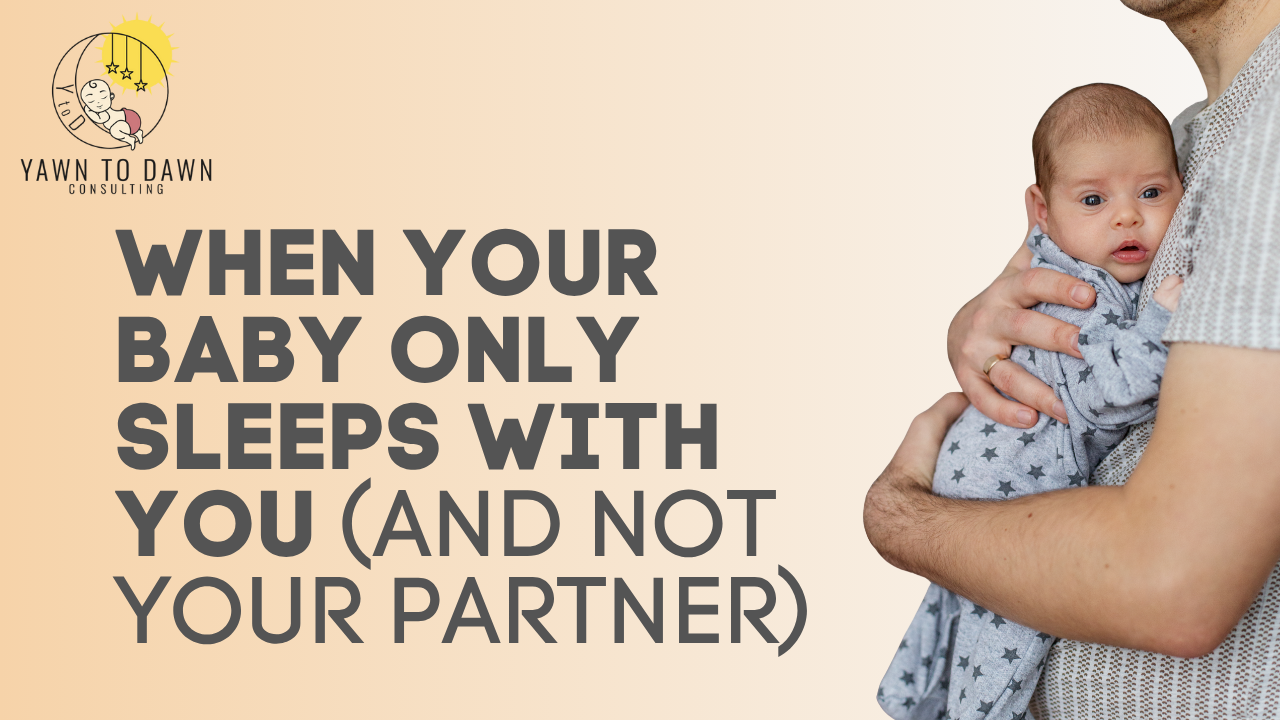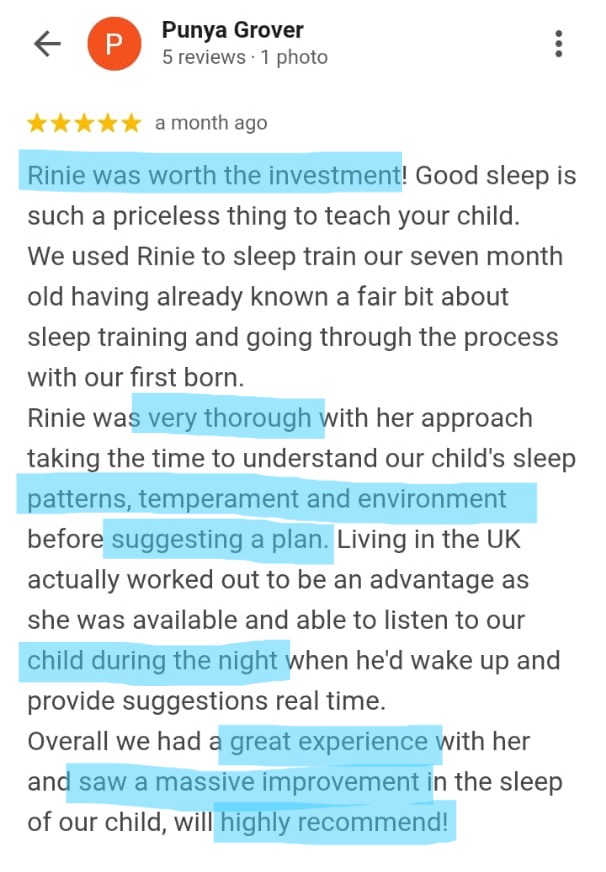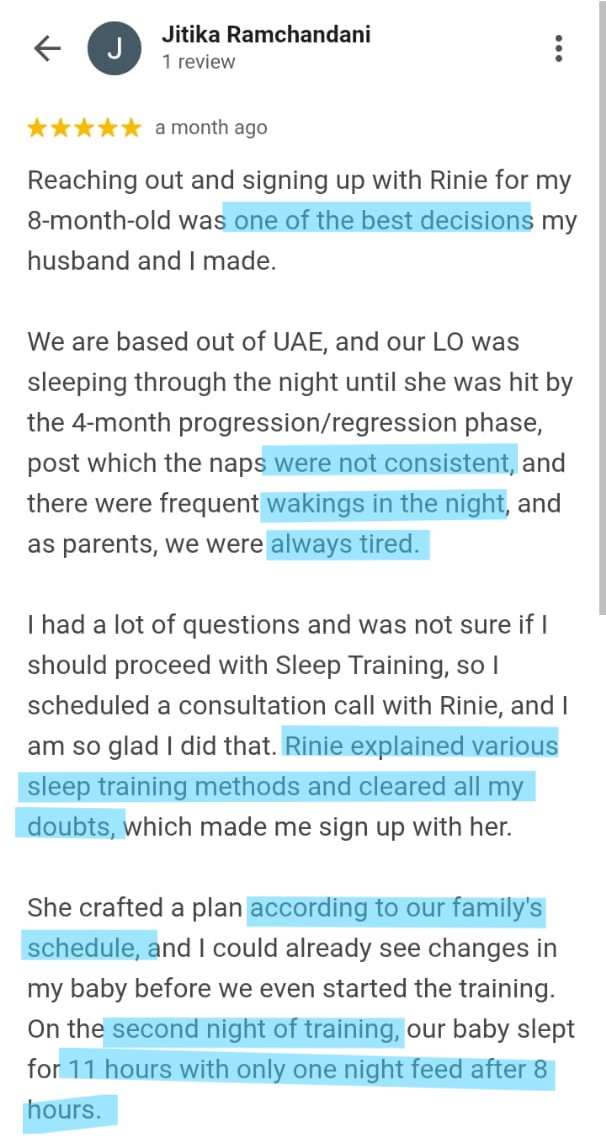When Your Baby Only Sleeps With You (and Not Your Partner)
Nov 20, 2025
“I’m so tired, Rinie. My baby only sleeps with me. If my husband tries to settle him, he cries bloody murder.”
If this sounds familiar, you’re definitely not alone. This situation is extremely common among families I work with as a baby sleep consultant in Singapore. It’s called parental preference, and while it may feel personal or overwhelming, it’s actually a normal developmental phase.
Parental preference often starts around 3–4 months, right when babies become more aware of the world around them. They start recognizing primary caregivers and gravitating toward the person who handles most feedings, soothing, and sleep routines, usually the mother.
The result?
Moms become completely exhausted, and dads often feel helpless, rejected, or discouraged.
The good news: Parental preference is fixable. And it doesn’t require force, tears, or any drastic methods.
How to Fix Parental Sleep Preference
Below are gentle, realistic steps that help your baby accept comfort from both parents without stress or overwhelm.
1. Let the non-preferred parent join the bedtime routine
Start small and make it gradual.
Let the parent who isn’t preferred first observe how bedtime usually works the tone, rhythm, and pace. Then slowly take over tiny parts of the routine like:
- singing the bedtime song
- reading the bedtime story
- giving the final cuddles
Do this 2–3 times per week.
Consistency is more important than perfection.
This helps your baby get used to the second parent’s presence in a low-stress, predictable way.
2. Find your own soothing style
One of the biggest misconceptions is that the non-preferred parent has to imitate Mom down to every detail.
Not true.
Babies sense confidence and calm far more than technique.
If you’re tense, rushed, or worried, your baby will feel that energy.
Instead:
- stay calm
- hold your baby with confidence
- use your own rhythm, voice, and touch
Your unique style can become a source of comfort but only if you’re consistent with it.
3. Moms, step out and give space
This is often the hardest step for mothers and the most important.
If you step in too quickly when your baby cries, it reinforces the idea that only Mom can fix the situation. That makes it harder for your baby to adjust to the other parent.
Some crying during the transition is normal.
Not distress crying just protest crying because this is new.
Give your partner the space to soothe.
And give your baby the space to learn.

What Works Better Than Mom vs Dad?
The real solution to parental preference isn’t choosing one parent over the other.
It’s helping your baby learn to fall asleep independently.
When your baby knows how to settle themselves at bedtime, they no longer rely heavily on one parent’s rocking, feeding, or soothing style. This makes bedtime smoother for everyone.
That’s the heart of gentle sleep training teaching babies to connect sleep cycles without depending on Mom or Dad to intervene.
This removes the emotional load from mothers, gives partners a chance to participate, and creates a more balanced parenting dynamic.
Ready to Break the Cycle?
If you’re ready to move from sleepless nights and emotional overload to predictable nights and a balanced bedtime routine, I’d love to support your family.
Through my 1:1 sleep support programs, I work closely with parents to create customized, gentle, and effective sleep training plans tailored to your baby’s age and temperament.
Whether your baby:
- wakes frequently at night
- only naps in your arms
- fights bedtime
- refuses to sleep for your partner
…you don’t have to navigate this alone.
👉 Learn more about my 1:1 sleep training programs and start your journey toward peaceful nights with Singapore’s trusted baby sleep consultant.
Related reads:
- How to Sleep Train an 18-Month-Old
- Will Sleep Training Affect Parent-Child Attachment?
- Sleep Training in Asian Households: Tips for Gaining Family Support




